di Raffaela Mariniello
“Mi sento molto a mio agio in questo disordine, perché evoca in me delle immagini”.
“E’ nel disordine – confida Francis Bacon a David Sylvester – l’inizio di tutte le cose, nel disordine e nella polvere che sembra eterna, l’unica cosa che durerà per sempre”.
Così prende forma l’elaborazione artistica, secondo Bacon, mettendo ordine nel caos di una stanza.
Questa riflessione, che tempo fa ho visto citata in un articolo dello psicanalista Vittorio Lingiardi, mi appartiene fortemente.
Le aree urbane che per anni ho attraversato, in automobile o in lunghe camminate, sono piene di polvere e di caos.
Soprattutto il caos mi ha sollecitato da sempre l’urgenza di riportare ordine nelle cose.
Non sempre però si ha coscienza della natura della propria ispirazione, per questo con il mio lavoro mi sembra di compiere una sorta di percorso psicanalitico e introspettivo.
La stanza di Bacon diventa una città e a Napoli, dove vivo, come in molte città del Mediterraneo, ho trovato il corpo centrale del mio lavoro.
Sono città in cui tutto è precario e con cui ho imparato felicemente a convivere, zone abbandonate, fuori dai margini, i luoghi che m’ispirano sono quelli dove manca una pianificazione urbana razionale e funzionale.
Sono spazi “altri”, “in mezzo” a un territorio organizzato o a uno del tutto trascurato. Le estensioni interstiziali, piene di oggetti e manufatti, sono testimoni di un lavoro in corso, dell’opera dell’uomo. Le cose, le materie che vedo, generalmente frutto del caso o dell’abbandono, sembrano invece poste lì intenzionalmente.
Questo genere di situazioni appartiene perlopiù ai cosiddetti paesi del Terzo mondo. Accomunate solitamente da una certa instabilità politica, conflitti sociali, rivoluzioni, le metropoli del Terzo mondo in fondo sono quelle più autentiche, rispecchiando un sentire umano più concreto. Ci sono realtà che nell’Europa ricca non esistono più, ma che puoi trovare ancora e solo nei paesi cosiddetti arretrati; per questo considero Napoli e in genere tutto il Sud del mondo come un’area geografica e mentale a sé.
Nei viaggi che ho compiuto negli scorsi anni, Beirut, Tunisi, Istanbul, ma anche nella realtà a noi più vicina, Atene, Palermo, Bari e Reggio Calabria, ho trovato i paesaggi più inverosimili. Carichi di presenze: grovigli di cavi di navi dismesse, montagne di cassette della frutta all’aperto, blocchi di gesso gettati in strada, stracci appesi a fili di ferro, una sedia nell’acqua in riva al mare, una barca avvolta in un telo e appesa al soffitto con le sue stesse cime. E ancora, il resto di un tragico incendio che deforma la materia. L’elenco potrebbe essere infinito come le ore che passo in contemplazione di questo paesaggio in cortocircuito.
Una Wasteland, la terra di nessuno, che il paesaggista entomologo Gille Clement, chiama invece il Terzo paesaggio: “Il Terzo paesaggio può essere visto come la parte del nostro spazio di vita affidata all’inconscio… Uno spazio privo di Terzo paesaggio sarebbe come uno spirito privo d’inconscio”.
Questi spazi, infatti, rappresentano l’allegoria dell’essere umano: lì si vede intimità, interiorità, lavoro, il fare con tutte le contraddizioni e i paradossi. Luoghi che suggeriscono sempre un pensiero sull’origine della natura umana, sulla vita. Sulla precarietà che attiva il pensiero alla ricerca di una felicità possibile.
Con la fotografia, è dal 1991 che mi sono messa alla ricerca del Terzo paesaggio. In quell’anno ho dedicato un lavoro alla definitiva chiusura dell’acciaieria di Bagnoli. (Bagnoli, una fabbrica, Electa, Napoli 1991): un momento storico che per Napoli segna la fine di un’epoca.
Da quell’esperienza, attraverso fotografia e video ho raccontato le mie radici, dapprima in modo del tutto irrazionale poi sempre più cosciente, volendo lasciare un segno sul territorio che abito.
All’inizio degli anni 2000 ho deciso di lasciare la periferia e di entrare nel cuore delle città italiane. Lo spostamento della mia ricerca che apparentemente sembra virare dal lato opposto della città, indica invece simbolicamente un passaggio dalla periferia territoriale a quella dell’animo umano. L’invasione di un territorio da parte del turismo di massa, i tagli economici al patrimonio artistico, la deriva di un’amministrazione pubblica incapace di decisione, rappresentano la periferia dell’anima. L’orizzonte non sembra essere poi tanto diverso.
Con l’intento di sottolineare la questione del turismo di massa, tra il 2006 e il 2012, ho realizzato la serie Souvenirs d’Italie, composta da fotografie, video e installazioni, esposta in una mostra a Napoli nel 2012. (Souvenirs d’Italie, Villa Pignatelli Casa della fotografia). In questo periodo mi sono dedicata a una lunga ricerca sugli effetti di questo fenomeno nel territorio italiano, e in particolare nelle città capoluogo e nei siti di montagna e di mare. In quegli anni, il turismo di massa non era sentito come lo è oggi, mentre adesso le riflessioni sociologiche, urbanistiche e di politica industriale più attente sono preoccupate del futuro delle nostre città.
Souvenirs d’Italie sono delle gigantesche “cartoline” che riflettono sul cambiamento soprattutto socio-culturale dei centri storici italiani, in cui la storia delle città coesiste con degli oggetti di consumo ed è messa a confronto con la visione del nostro paese come meta di un grand tour impoverito e slabbrato da una contemporaneità senza forma.
Una serie di fotografie realizzate a Capri nell’inverno del 2016 e confluite poi in una mostra alla Certosa di Capri (Capri B&B Behind and Beyond a cura di Adriana Rispoli) mi ha permesso di ritornare sul tema del turismo che è ancora di grande attualità, di rivederlo e rinnovarlo in una nuova forma espressiva ed estetica.
L’anno successivo, con l’invito del direttore dell’Istituto Italiano di Cultura di Barcellona Angelo Gioè e nell’ambito della proposta di residenze artistiche a cura dell’Istituto, ho potuto proseguire la ricerca realizzando un video (Greetings from, video monocanale, colore, 10’).
A Barcellona ho alloggiato per un mese in una stanza situata sopra una piazza nel centro della movida della città, la Plaça Reial. Durante tutto l’arco della giornata assorbivo suoni, rumori, odori, immagini. Percepivo questo luogo come una fabbrica in continuo movimento che lavorava senza sosta giorno e notte. Fin dalle prime ore del mattino, infatti, la piazza si prepara, si riassetta e si organizza per accogliere il turista; un via vai ininterrotto di camioncini per il rifornimento, macchine per la pulizia, sgombero di rifiuti occupano lo spazio. Poi arrivano alla spicciolata i turisti, il cui numero cresce di ora in ora, sino a diventare un flusso continuo che deambula, mangia, fotografa, fuma e beve sino a notte fonda. Nell’incessante andirivieni dentro e fuori i locali, i bar e i ristoranti, gli unici servizi esistenti a Plaça Reial, sono i saltimbanchi, i giocolieri e gli acrobati che intrattengono tutti in questo tempo sostanzialmente vuoto, perché nella piazza in realtà non c’è nulla da vedere.
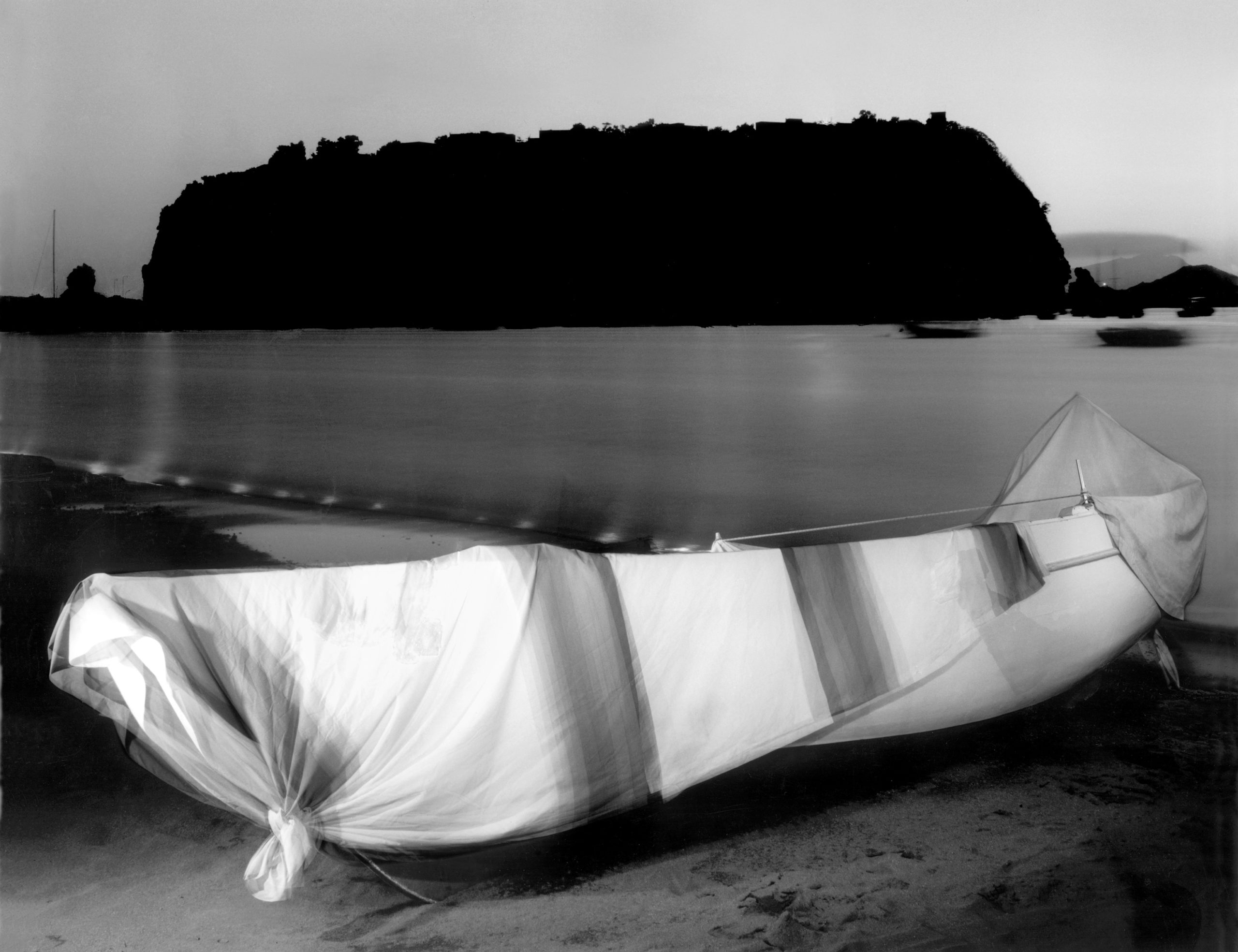
A drifting landscape
Raffaela Mariniello
“I feel at ease among this chaos, because it recalls images inside me”
“It is among chaos – Francis Bacon confides to Davis Sylvester – that lies the beginning of everything, in chaos and seemingly eternal dust, the only thing that will last forever”
This is how, according to Bacon, the artistic elaboration takes shape, by bringing order among the chaos of a room.
This consideration, that some time ago I saw referenced in an article written by the psychoanalyst Vittorio Lingiardi, strongly belong to me.
The urban areas I have been crossing for years, by car or during long walks, are full of dust and chaos.
Chaos, especially, has always stressed inside me the urge of bringing order into things.
However, you are not always aware of the nature of your inspiration, that is why I feel that through my job I’m undertaking a sort of psychoanalytical and introspective journey.
Bacon’s room becomes a city, and in Naples, where I live, and in other Mediterranean cities, I found the main fundamental of my work.
These are cities where everything is uncertain and where I happily learned to live, abandoned zones, outside the boundaries, the places that inspire me are those lacking a rational and functional urban planning.
Those are “other” spaces, “in-between”, in an organized or neglected territory. The interstitial extensions, full of objects and artifacts, are the proof of an ongoing work, the work of man. The things, the materials I see, usually born from chaos or abandonment, appear as they are intentionally placed there.
This type of situation belongs mostly to the so-called Third World countries. Only sharing a certain political instability, social conflicts, revolutions, the Third World metropolis are, after all, the most authentic ones, conveying a more concrete human feel. There are realities that don’t exist anymore in the rich Europe, realities that now you can only find in the alleged underdeveloped countries; for this reason, I believe Napoli, and in general the entire south of the world, is a mental and geographic area in itself.
During my journeys in the last years, Beirut, Tunis, Istanbul, but also closer realities, Athens, Palermo, Bari and Reggio Calabria, I found the most unusual landscapes. Rich in presences: tangled cables from abandoned ships, mountains of fruit boxes left outdoor, chalk blocks thrown outside the streets, rags hanging from iron strings, a chair left in the water by the sea, a boat enveloped in a cloth and fixed on the ceiling with its own ropes. And still, the remains of a tragic fire that deformed all matter. The list could be endless like the hours I spent contemplating this short-circuits landscape.
A Wasteland, no man’s land, that the landscape painter and entomologist Gille Clement, called the Third landscape: “The third landscape can be seen as that part of our vital space that is entrusted to the subconscious…A space devoid of the Third landscape would be as a soul devoid of subconscious.”.
These spaces, indeed, represent the allegory of the human being: there you can see intimacy, interiority, work, contradictions and paradoxes. Places that always point us towards a consideration on the origin of human nature. On the precariousness that activates the though, searching of a possible happiness.
Through photography, since 1991 I’ve been looking for the Third landscape. During that year I dedicated a work to the permanent closure of the steel plant in Bagnoli. (Bagnoli, una fabbrica, Electa, Naples 1991): a historic moment for Naples that marked the end of an era.
From that experience, through pictures and videos I illustrated my roots, first in a completely irrational way and then more and more consciously, wanting to leave a mark on the land I live.
At the beginning of the 2000s I decided to leave the suburb area and to enter the hearth of the Italian cities. This shift in my research apparently seems to focus on the opposite side of the city, but symbolically points at a shift from the edge of the territory to the edge of the human soul. The invasion of a territory from the mass tourism, the economic cuts to the artistic heritage, the drift of a public administration uncapable of taking decisions, represent the edges of the soul. The horizon does not look so much different.
With the goal of underlining the subject of mass tourism, between 2006 and 2012, I realized the Souvenirs d’Italie series, made up of pictures, videos and installations, displayed in an exhibition in Naples in 2012. (Souvernirs d’Italie, Villa Pignatelli Casa della fotografia). During this period, I devoted myself to a long research on the effects of this phenomenon in the Italian territory, and in particular in the biggest cities and in the mountain and seaside resorts. In those years, mass tourism was not perceived as it is today, while now the sociological, urbanistic and industrial deliberations are more concerned with the future of our cities.
Souvenirs d’Italie are huge “postcards” that show the socio-cultural transformations of the Italian old towns, where the cities’ history coexists with consumer goods and is compared with the vision of our country as a destination in a grand tour, impoverished and stretched by a shapeless contemporaneity.
A series of pictures taken in Capri in Winter 2016 and later merged into an exhibition at the Charterhouse of Capri (Capri B&B Behind and Beyond curated by Adriana Rispoli) allowed me to work again on the subject of tourism, still very relevant, to reinspect and renovate it under a new expressive and aesthetic form.
The following year, invited by the director the Italian Cultural Institute of Barcelona, Angelo Gioè, as part of the project for artistic residences by the Institute, I managed to continue my research, producing a short film (Greetings from, single-channel video, color, 10’).
In Barcelona, I stayed for a month in a room located above a square in the middle of the city night-life, la Plaça Reial. During the entire day I assimilated sounds, noises, smells, images. I sensed this place as a continuously operating factory that functioned non-stop day and night. Since the first hours in the morning, in fact, the square is arranged and organized to welcome tourists; an uninterrupted coming and going of cleaning machines, supply and garbage trucks occupies the place. Then, one by one, the tourists arrive, whose number grows larger hour after hour, until it becomes an endless flow that wanders, eats, takes pictures, smokes and drinks late into the night. In this non-stop confusion inside and outside clubs, bars and restaurants, the only existing services in the Plaça Reial, are the performers, acrobats and jugglers that entertain everyone in this essentially empty time, since in the square, actually, there is nothing to see.


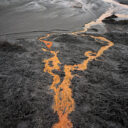
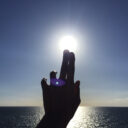

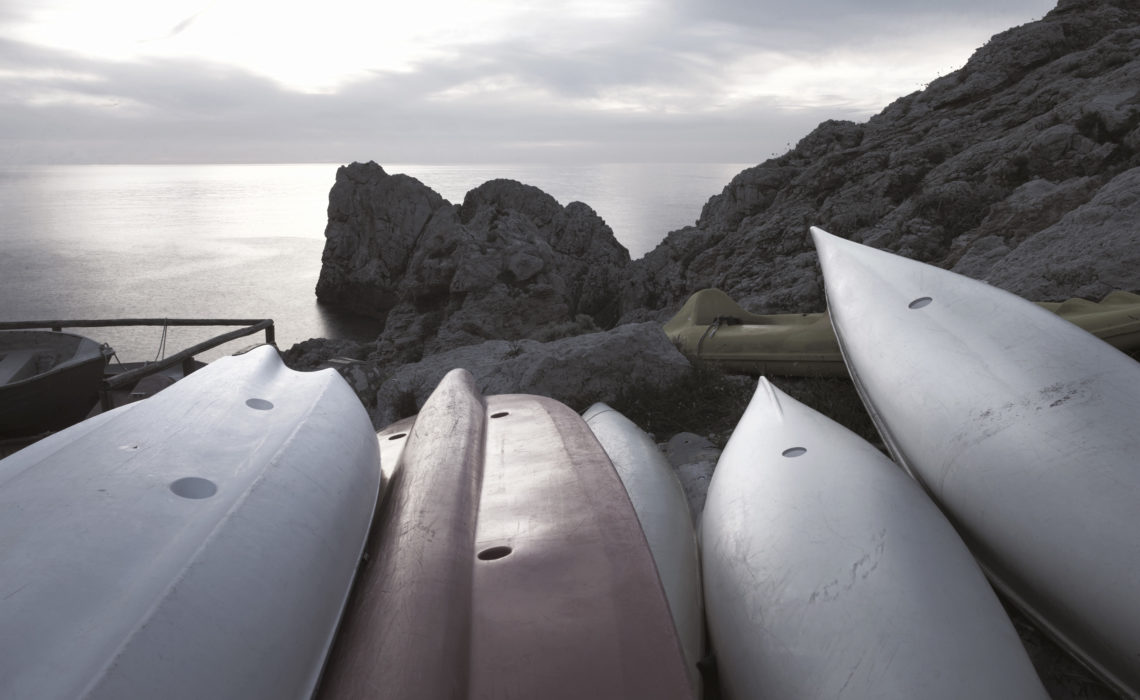
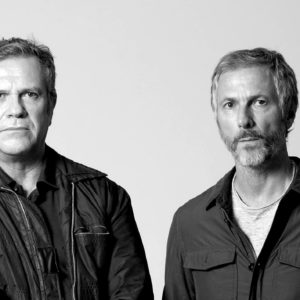
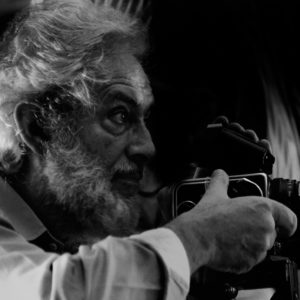
No Comments